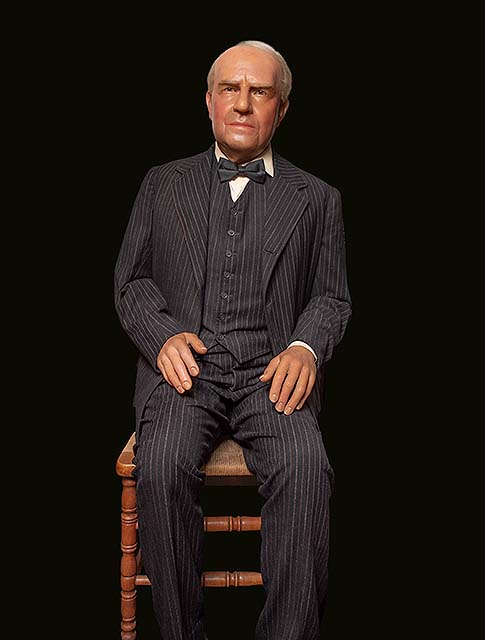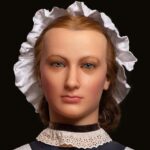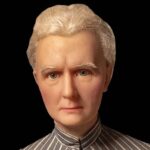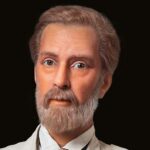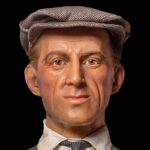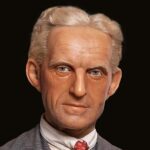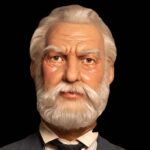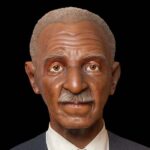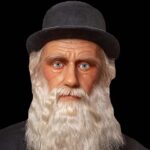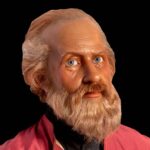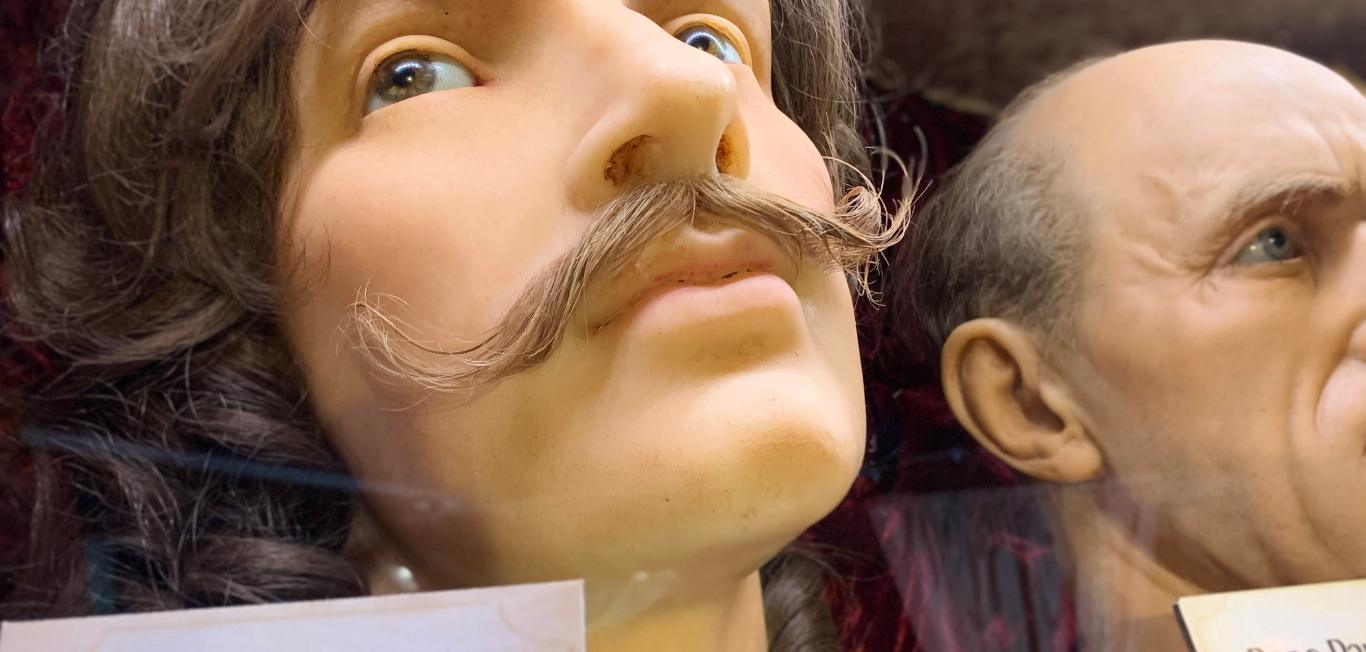History of Thomas Edison
Born on February 11, 1847, in Milan, Ohio, Thomas Edison was a notable inventor and businessman. As a child, Edison received minimal education, but his curiosity and determination to learn about the fields of science and technology ultimately led him to become one of America’s most notable inventors. Thomas Edison’s commitment to communication and technology is one of the reasons we are able to enjoy modern technology.
Edison’s ambitious journey began in 1876 when he established his first laboratory in Menlo Park, NJ. This facility became the birthplace of several groundbreaking inventions, most notably, the phonograph, which was patented in 1878. This invention revolutionized the music industry by enabling sound recording and playback.
In 1879, Edison invented the practical electric lightbulb, which changed the course of the future and transformed the way we live. His steadfast efforts to develop a reliable and commercially viable incandescent lightbulb led to the establishment of the Edison Electric Light Company. Edison’s innovation laid the groundwork for the modern electric utility industry, as his electric light company extended to the development of an electrical distribution system, including power plants and electrical grids.
Thomas Edison’s innovations extended beyond light and sound technology. Edison held over 1,000 patents in various fields, including telegraphy, motion pictures, and storage batteries. The invention of the motion picture device known as the Kinetoscope was a pivotal moment for the film industry, as it allowed for the projection of moving images.
Aside from his technical achievements, Edison also had remarkable business acumen. He established the Edison General Electric Company (now known as General Electric) in 1889, merging his various businesses to create a powerful corporation. Edison’s ability to develop and commercialize his inventions made him a high-profile figure in the industrial landscape of his time.
DID YOU KNOW?
Edison held over 1,000 patents in various fields, including telegraphy, motion pictures, and storage batteries.
Thomas Edison’s passion for innovation and knowledge led to his numerous contributions, earning him international recognition. Edison was the recipient of numerous prestigious awards, most notably, the French Legion of Honor in 1881 and the Congressional Gold Medal in 1928. His lasting legacy of creativity and modernization remains an influence on inventors worldwide.
Thomas Edison’s noteworthy history displays his exceptional capabilities as an inventor. His entrepreneurial spirit has an indelible impact on the world. Edison’s inventions are a foundation for the growing world of technology we know today. Edison’s relentless quest for innovation serves as a reminder of the power of curiosity, perseverance, and dedication to shaping the course of history.
Fun Facts About Thomas Edison
Thomas Edison’s family called him Al, which is an abbreviation of his middle name, Alva.
Thomas Edison’s first two children were nicknamed Dot and Dash, inspired by the telegraph.
Thomas Edison conducted his first experiments as a child in his parent’s home.
Thomas Edison experienced partial deafness.
Thomas Edison’s first invention was an electric vote recorder.
Thomas Edison had 1,093 patents, which is one of the highest numbers of patents held on record.
The first record of Thomas Edison’s voice on the phonograph is his recitation of the nursery rhyme “Mary Had a Little Lamb.”
Thomas Edison built a laboratory on a train in his adolescence.
One of Thomas Edison’s developments was a talking doll said to have been unsettling.
Early Life of Thomas Edison
Thomas Edison is an iconic figure in American history. He was an inventor and entrepreneur who achieved significant success. Edison’s work laid the foundation for modern technology and raised the bar for other scientists and inventors.
From a young age, Thomas Edison had a demanding need for knowledge, and his natural curiosity led him into the fields of science and technology. His monumental success can be attributed to his need to learn, as it was his motivation behind the numerous experiments and inventions he completed in his lifetime. Around the age of 10, Thomas Edison built a small lab in his parent’s basement, where he would conduct his experiments and tinker, developing his understanding of electricity.
By the age of 12, Thomas Edison held a job as a newsboy on a train. This role sharpened his skills in entrepreneurship, and he began publishing his own newspaper called the Grand Trunk Herald. Edison set up shop on the train with a printing press and began selling his newspaper to passengers. His success as a newsboy and publisher initiated his lifelong career as an inventor and businessman.
Edison’s quest for knowledge continued as he read books to educate himself on an array of subjects, including engineering, mathematics, and science. He did not receive a formal education, which made it necessary for Edison to study independently and conduct hands-on experiments for a well-rounded expertise.
At the age of 27, Thomas Edison invented and patented the quadruplex telegraph, an enhancement of existing telegraph technology that produced a significant advancement in the way people communicate. The quadruplex telegraph was created in 1874 and had a system that enabled multiple messages to be transmitted simultaneously over a single wire. Edison later sold the rights to this device to Western Union, sealing his reputation as a master inventor and businessman.
DID YOU KNOW?
Thomas Edison did not receive a formal education, which made it necessary for him to study independently...
Two years after Thomas Edison invented the quadruplex telegraph, he founded his first true laboratory in Menlo Park, NJ. Edison often referred to his lab as the “Invention Factory,” as it was at the heart of his innovation and experimentation. In 1877, the phonograph was invented in the Invention Factory. This device could record and play back sound and became a defining moment in the audio technology industry.
It was in his early years that Thomas Edison developed the device that would make him a household name. Edison spent several years researching and conducting experiments to develop an incandescent lightbulb. The electric lightbulb was invented in 1879 and transformed lives all over the world with a safe, reliable, and efficient source of light.
Thomas Edison was a pioneer in the technology industry, and his revolutionary contributions to science left a lasting legacy. He became one of the most prominent figures in history, as his inventions paved the path for further advancement in modern technology.
Inventions and Accomplishments of Thomas Edison
Thomas Edison submitted his first patent application in 1868 for a device called the electric vote recorder.
Thomas Edison’s 1874 invention of the quadruplex telegraph, with the ability to simultaneously transmit messages for four individuals over a single wire, was a momentous breakthrough in telegraphic communications.
Thomas Edison began work on the carbon telephone transmitter in 1876. Upon completion, this device became an integral part of telegraphic communications. The carbon telephone transmitter was a microphone that enhanced the clarity and quality of sounds.
The phonograph was invented in 1877 and paved the way for the advancement of audio technology. The phonograph was crucial for the development of recording and playing back audio.
Thomas Edison became a household name in 1879 after applying for a patent for the commercial incandescent lightbulb.
Thomas Edison demonstrated the capabilities of the electric power distribution system by powering a square block of commercial and industrial businesses, as well as some private residences, in Manhattan in 1882.
Thomas Edison first publicly presented the Kinetoscope and Kinetograph, which became revolutionary for the motion picture (film) industry, in 1893.
In addition to his contributions to the realm of electricity, Thomas Edison invented the Kinetograph, one of the early motion picture cameras, thanks to which we can enjoy the visual entertainment of the 21st century.
Thomas Edison worked extensively and significantly contributed to early developments in X-ray technology.
One of Thomas Edison’s most significant contributions was his work improving the rechargeable battery.
Late in Life
Thomas Edison passed away on October 18, 1931, at the age of 84. Edison was a renowned inventor and businessman who left a lasting legacy of significant achievements in the fields of science and technology. Many of his inventions have influenced the technology that we enjoy today.
Edison created an astonishing number of inventions in his lifetime. Thomas Edison began conducting his experiments around the age of 10, and by the age of 22, he completed his first invention, the electric vote recorder. His steadfast quest for knowledge and innovation established Edison as one of the greatest inventors of all time, even earning him the nickname “The Wizard of Menlo Park.”
When people think of Thomas Edison, they think of the lightbulb. Edison spent several years developing the incandescent lightbulb, an invention that changed the future of illumination. The lightbulb soon replaced the use of gas and oil lamps, which also improved fire safety. Edison’s invention of the lightbulb also led to electrical lighting systems.
Edison further advanced the electrical power industry by developing a system for electrical power distribution. The first instance of electric power distribution was built in Manhattan and successfully supplied electricity to dozens of businesses, residences, streetlights, theaters, and other entertainment venues. This advancement was a revolutionary invention and led to the development of all homes receiving power through an electrical grid system.
Throughout his lifetime, Thomas Edison continued to gift the world with revolutionary inventions. Other than the lightbulb, one of his most notable inventions was the phonograph, which allowed the recording and playback of sound. Edison also invented the Kinetograph, which was a device for recording motion pictures. These two inventions are responsible for the creation and success of today’s entertainment industry.
DID YOU KNOW?
Other than the lightbulb, two of Edison's most notable inventions were the phonograph and Kinetograph.
Thomas Edison’s inventions significantly impacted the world. Edison faced many setbacks and failed experiments but continued on, demonstrating determination and resilience. His gift for entrepreneurialism aided in monetizing his inventions and later establishing the Edison General Electric Company, now known as General Electric. Edison’s advancements in the electric utility industry are a direct result of his innovation and business acumen.
By the time of his death, Thomas Edison had transformed the world and received several honors and awards for his revolutionary contributions. From his dedication and innovation to his advancements for the modern world, Edison’s legacy continues to influence inventors, scientists, and entrepreneurs.
FAQs
When was Thomas Edison born?
Thomas Edison was born on February 11, 1847.
When did Thomas Edison die?
Thomas Edison died on October 18, 1931.
How did Thomas Edison become famous?
Thomas Edison became famous through his innovative inventions that would later transform the way the world uses electricity. He is best known for his incandescent lightbulb, the phonograph, and for advancing electrical power distribution.
How did Thomas Edison change the world?
Thomas Edison’s influence on the world cannot be overstated. A majority of everyday things are possible because of Thomas Edison’s inventions and contributions to science. Some of his inventions that you would easily recognize include electrical lighting, sound recording, and motion pictures.
